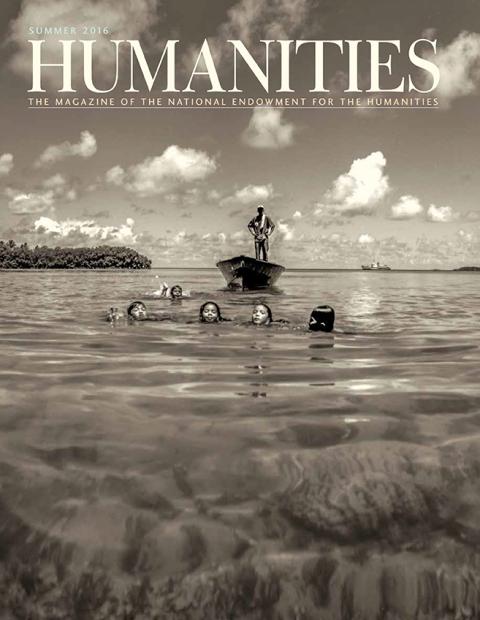The name Pulitzer serves as an imprimatur for the highest excellence in journalism today, but Joseph Pulitzer, who founded and endowed the prize, was, during his lifetime, more often associated with the grittiest, most self-serving, and sensationalist methods used to sell newspapers.
Pulitzer came from humble beginnings and was only 17 when he made his way from Hungary to the United States as a contracted substitute for a Civil War draftee. After the war, he traveled to Missouri, working his way up at the German-language Westliche Postand eventually becoming owner of the St. Louis Post Dispatch in 1878. He also owned the New York World, a competitive, combative paper known for its investigation of corruption at all levels and for its “yellow journalism”: outrageous, eye-catching headlines, exaggeration, and pervasive scandal-mongering. Yet Pulitzer harbored grand ambitions for journalism itself. “I am deeply interested in the progress and elevation of journalism, having spent my life in that profession, regarding it as a noble profession and one of unequaled importance for its influence upon the minds and morals of the people,” he wrote.
Pulitzer retreated to Maine during the sunset of his career. In 1902, at his summer estate, Chatwold, in Bar Harbor, he dictated his plan to establish a journalism school and annual prize. His vision was made a reality by his last will and testament. The Columbia School of Journalism opened shortly after his death in 1912, and the first Pulitzer Prizes were awarded in 1917. Fittingly, the Maine Humanities Council is celebrating the prize’s centennial throughout the state this year, including public programs about Pulitzer at Bar Harbor’s Jesup Library, education programs in connection with Ernest Hemingway’s restored blue marlin at the L. C. Bates Museum, forums with photographer Larry Price, and a talk by historian Laurel Thatcher Ulrich for the Association of Maine Archives and Museums.
Maine is just one of 46 state humanities councils taking part in the Pulitzer Prize Centennial Campfires Initiative, a partnership between the Pulitzer Prize Board and the Federation of State Humanities Councils. For example, Humanities South Carolina created three 30-minute programs to air on public television, featuring Pulitzer Prize-winning columnists, commentators, journalists, and authors. Cal Humanities is holding numerous traveling “On the Road” discussions with writers such as journalist Bettina Boxall and historian Miriam Pawel. Indiana Humanities is sponsoring scholar-led hiking and camping trips that examine the state’s environmental authors and literary heritage. And on it goes across the country and territories.
Although the Pulitzer Prize is most often affiliated with American journalism and other literary endeavors, Pulitzer allowed for an advisory board to alter the prizes as they saw fit and, in 1943, they added the category of music to the prize roster. But it would have been hard for Joseph Pulitzer to imagine the haunting, almost sacred tribute that occurred earlier this year at Bates College’s Schaeffer Theatre in Lewiston, Maine, as David Lang’s Pulitzer-winning The Little Match Girl Passion was visually reimagined with puppets for the centennial celebration.
This 35-minute-long choral piece won the Pulitzer Prize for music in 2008 as a new work that combined text from the tragic short story by Hans Christian Andersen and the libretto of Bach’s 1727 St. Matthew Passion. The result is a piece of music for four voices that elevates Andersen’s sad tale of an impoverished girl who sells matches on the city streets and freezes to death on New Year’s Eve to a tragedy of mythical proportions, showing the common strains between her death and the passion of Christ.
“What Lang did was combine two very different realms and ideas and gave them a third life,” says John Farrell, artistic director of Figures of Speech Theatre, the Maine-based troupe that staged the puppet performance. “It was Lang’s inspiration to combine these two different forms that leaped me into a different way of looking at the Little Match Girl story itself.”
“Come. Come. Come. Daughter, Daughter, Daughter,” begins Lang’s work, invoking Bach’s initial plea to the daughters of Zion to witness Christ’s passion. But here the words draw the audience directly into the relationship between the girl and her dead grandmother, the only figures on stage. The grandmother is played by a human, all in white, with an ethereal Noh mask, inspired by Farrell’s work in Japanese theater (he had a fellowship in Japan in 1999). “In Noh, often one of the main characters will be the ghost,” explains Farrell, who sculpts the masks and puppets himself. “I began to think about the grandmother as not just the representation of Christ, who shows up at the last minute and carries the girl to heaven, but as a spiritual entity, who functions on the one hand as a cosmic mother figure, and on the other hand as the embodiment of a human mother figure who has to watch her granddaughter suffer and die.” Making the grandmother part human and part sculpture on stage stresses this duality.
The little match girl is a life-sized puppet on whose face is written the Andersen story, mimicking the Bunraku tradition of adhering scraps of old scripts to carved puppet heads to protect them. But Farrell didn’t think that was quite right for the little match girl. “I wondered what it would look like if I took this white face and handwrote the entire story onto it. Which, for me, felt like a way of turning her life into metaphor—her being is marked by the story itself.” Farrell admits, “I knew it wasn’t going to be seen by the audience, so why bother? I don’t know. There is something magical about her carrying that with her.”
In fact, a magical sense comes from the whole performance, which uses light and shadow to show memories, visions, and hauntings that are only in the girl’s mind. The puppet’s movements and static face seem tragically real at times. The grandmother hovers over the girl, watching and waiting. In the end she places the girl’s soul, a second puppet, in a boat to an unknown destination. “It took the story away from the realm of death,” says Farrell. The grandmother, and the audience, sense that the girl’s journey is not over.
Another artist, a Pulitzer-winning photojournalist named Manny Crisostomo, has also taken his audiences on journeys: through a year in an inner-city Detroit high school, through life as a Hmong refugee in California, through the struggles of children fighting obesity, and on a journey to see Guam through his native lens. The Guam Humanities Council is celebrating the island’s sole Pulitzer winner in September with a traveling retrospective exhibition of his work, a two-week residency with the photographer, and lectures and workshops for students and the public on the art of photojournalism.
Born in 1958 in Guam, the Pacific island of around 172,000 people that became a U.S. territory shortly after World War II, Crisostomo started his journalism career just after high school as an intern at the Pacific Daily News, rewriting press releases and writing articles. He continued as a reporter at the University of Guam’s student paper and for the Newson weekends and during summers. After he submitted his work for a full-time position, the paper’s new executive editor said frankly to him, “Well, I don’t think you are any good at this.” Crisostomo laughs, “If it wasn’t for him I wouldn’t be in photography.” Crisostomo took the only job open to him at the paper, as a photography lab technician—learning the trade in the darkroom, from photography magazines, and taking pictures of what he calls “mutant vegetables.”
“People would come in with their Siamese pumpkins, and their contorted gourds, and their super big tomatoes, and all the photographers were out doing real assignments, so I said, ‘Sure I’ll take a picture of it,’” recalls Crisostomo. So a lot of his first pictures “were of a guy in front of triplet gourds or something like that.”
But what Crisostomo has become renowned for are his photographs of people in their everyday lives. In 1988, while working for the Detroit Free Press, he spent a year documenting the world of an inner-city school with a student body that was, according to Crisostomo, evenly divided among white, Hispanic, and African-American students. Crisostomo spent three days a week at the school for a whole year, attending prom, sports events, and two funerals of students who had committed suicide. “I wanted access,” he explains. “I didn’t want to parachute in, take a bunch of pictures, and then hike my way out.”
The result was a special 12-page Sunday section published by the Detroit Free Presscalled “A Class Act: The Life and Times of Southwestern High School,” featuring more than 60 photographs taken over the school year. It won Crisostomo the Pulitzer Prize in 1989, and he donated the cash winnings toward a scholarship for the school.
Now a photographer at the Sacramento Bee, Crisostomo continues his photojournalism with an emphasis on access to sometimes overlooked communities—whether capturing intimate moments with Hmong refugees in his 2005 project “The Leftover People,” or sharing the beauty of his native culture in his 1992 book Legacy of Guam: I Kustumbren Chamoru. As a photographer, he hopes to be a fly on the wall. “I wish I was Harry Potter and had that invisibility cloak,” he says. “That would be a great accessory for photographers to have in their bag.”




